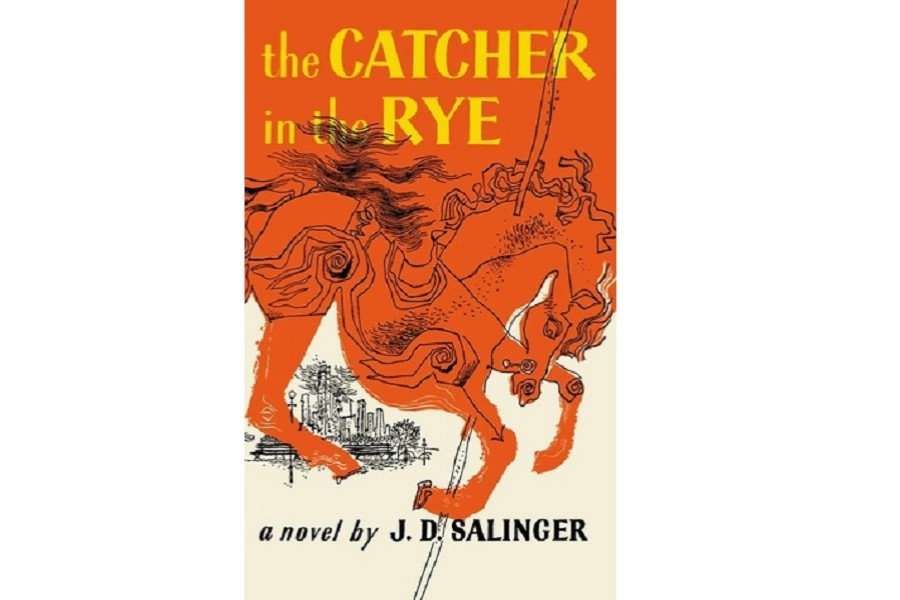If one talks about the most controversial books that have been published yet, then J D Salinger’s ‘Catcher in the Rye’ might pop up. J D Salinger was born in 1919 in New York City. A college dropout, Salinger published his first and only novel, the ‘Catcher in The Rye’ in 1951.
The plot of the story is set sometime around the 1950s. It revolves around the life of Holden Caulfield, who also is the narrator of the story. In the beginning, Holden does not disclose his location but tells the reader that he is being treated at a sanatorium or a mental hospital.
Sixteen-year-old Holden’s story starts with him being expelled from the renowned Pencey Prep School. To Holden, his elite educational institute seems pretentious. In his narrative, we find the nuanced insult thrown at the school motto, “Since 1888 we have been moulding boys into splendid, clear-thinking young men,” as Holden tells us about the forced suicide of James Castle, whom he admired.
The lonely teenager then starts spending his time here and there, observing people and eventually ends up in New York City. The book allows us to follow Holden’s lifestyle for only three days. Being abandoned by his loved ones and having not the slightest interest to face his parents, the protagonist is seen begging for someone who would listen to him. And as he fails to find anyone, he starts to see more deeply into the souls of the people passing him by. He sees through their shallow perspective, their fake concern and eventually recognises them as ‘phonies.’
The entire world, filled with people who are not actually human, starts to appear before Holden. The boy breaks down into disappointment, starts to lose all his belief as his favourite teachers fail him, his mentor makes a move on him and by having a friend who does not get the bigger picture. Holden tries to find shelter in the arms of a girl, but never finds the love that he is searching for. All these twists and turns of daily events, somehow make Holden paranoid. The writer finished the end metaphorically which will be explained later on.
Holden despises the adult world. How it spoils the innocent mind with its complexities; lack of morality, integrity and originality. And resists himself from indulging in it. But he has almost no choice left. On the other hand, features of the adult world like alcohol, cigarettes, sex, independence, fascinate him. Although Holden was not able to establish a profound love life, he always had his way around women; though he never took them for granted.
Holden had an upper-middle-class background, just like the writer. And like Salinger, he struggled with people of the same status. This makes us question if the book was actually an indirect autobiography of the writer himself. We see how Holden’s family pressures him to try for the Ivy League and how he runs away. He tries to find solace trying out different kinds of absurd plans where he decides to get married. When this does not work, he decides to move to the West and live there like a deaf man.
At the end (in chapter 22), when his sister asks him what he wants to be, Holden says he will be ‘the catcher in the Rye.’ One of the many symbolisms that is used in the novel, this is the most important. We see the term for the first time in Chapter 16, when little Holden sings the song ‘Comin’ Thro’ the Rye’ by Robert Burns. We see Holden picturing himself standing at the edge of a cliff, trying to catch the kids from falling off. The kids here are a representation of childhood. Holden’s act of saving them from falling actually represents his will to shelter the children’s innocence.
Salinger tried to deliver hidden messages through Holden’s attire too. For example, Holden’s red hat is a symbol of his independence. We can also notice Holden’s fascination towards museums, because nothing ever changes there. This represents Holden’s desire to hold on to everything that comes to him. Holden’s school is also an important symbol that represents the phoniness and the impostor characteristic of the people who run them.
The ‘Catcher in the Rye’ can be described as a coming-of-age novel, but with a twist. His story starts with distress that continues throughout the story; for a brief moment he encounters epiphany, but eventually ends up having a physical and mental breakdown. J D Salinger did not force a 'happy ending' at the end. He delivered his message in a realistic set up. In this way, the novel comes off as an authentic one.
But the novel was not welcomed warmly. From 1961 to 1982, it was the most censored book of the USA. High schools in Issaquah, Washington banned the book in 1978. In a report published by the American Library Association, it listed 'Catcher in the Rye' as one of the most challenged books of 2005 and later in 2009. The book also worked as inspiration behind many shootings and murders. This includes the murder of Rebecca Schaeffer, assassination attempt on Ronald Reagan, the shooting of John Lennon, etc. The shooter of John Lennon, Mark Chapman was arrested with a copy of the novel, which had a writing in it that said, "To Holden Caulfield, From Holden Caulfield, This is my statement."
Although the book has a questioning historical background and many violent reactions, after reading the book, it makes almost every reader associate with Holden Caulfield. It questions what we know and how we act. It makes us wonder how lovely it would have been if we had known the writer and could call him up anytime. An absolute masterpiece, the 'Catcher in the Rye' by JD Salinger is a must read.
Tabassum Binte Tabriz is a student at Dhaka University.


